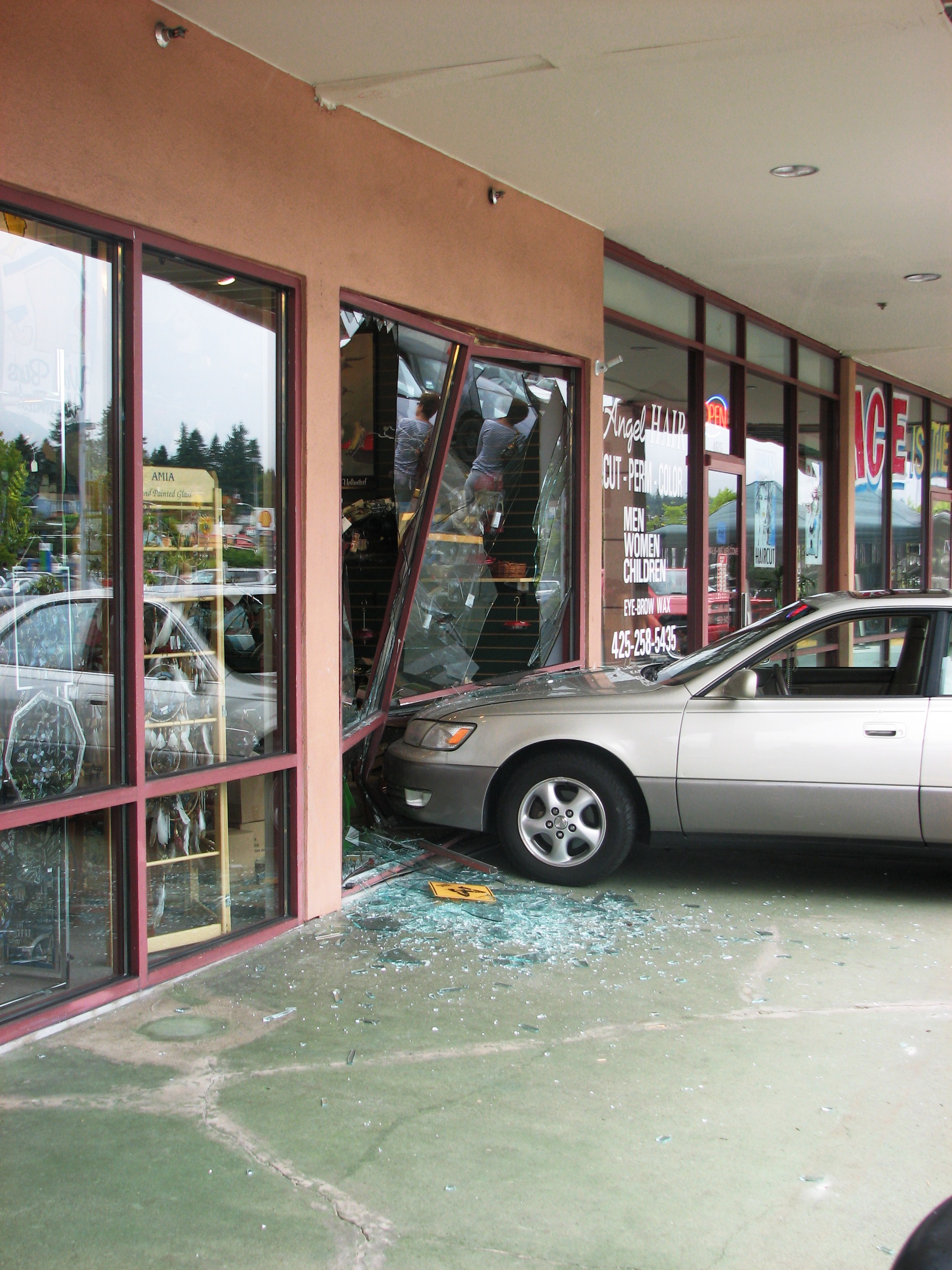Although the incidents of workplace injuries have continued to drop for most of the past 11 years, the Bureau of Labor Statistics reported than over three million people were injured on the job in 2013. These figures encompassed people  employed by private employers. According to figures obtained in 2012, five of the most common reasons for workplace injuries accounted for more than 65 percent of the costs.
employed by private employers. According to figures obtained in 2012, five of the most common reasons for workplace injuries accounted for more than 65 percent of the costs.
- With 25 percent of the 59.58 billion dollars that was spent on workplace injuries in 2012, overexertion was the number one cause. These types of injuries were most often the result of holding, carrying, throwing, pushing, lifting and pulling.
- Falls accounted for 9.19 billion dollars — or more than 15 percent — of the costs of workplace injuries. This category includes only those falls that occurred on one level as opposed to falls from a different height.
- Being struck by equipment of some sort or an object accounted for 8.9 percent of the cost burden worth more than $5 billion in costs.
- The fourth most prevalent cause of workplace injuries was due to falls from a height. With this category encompassing 8.2 percent of the cases reported, the monetary cost was $5.12 billion.
- Overexertion injuries that were not in the first category round out the top five most common causes of workplace injuries. Some examples of the injuries that could fall under this classification include those caused by stepping, crawling, bending, kneeling, twisting, reaching, walking, reaching, standing or sitting. They accounted for 7.2 percent of the total injuries with a cost of $4.27 billion.
Another 18.4 percent of the costs associated with workplace injuries fell into five other categories. These include injuries caused by road vehicles, slips and trips without falling, being compressed between or by equipment or objects and repetitive movements.
Read more
 Spring is a popular time for adding to your home in the form of remodeling or putting up an addition. If you are like many people, you hire someone to complete the job for you. For most people, it is easier and faster to interview and hire a contractor to do the work instead of trying to muddle through it yourself.
Spring is a popular time for adding to your home in the form of remodeling or putting up an addition. If you are like many people, you hire someone to complete the job for you. For most people, it is easier and faster to interview and hire a contractor to do the work instead of trying to muddle through it yourself.
Peace of Mind With the Professionals
One of the reasons for hiring a contractor to build that much-needed addition to your home or to remodel your outdated kitchen is to ensure that the job is done right the first time. Unless your career requires you to know the latest building codes, it is unrealistic to expect that you do so. Instead you rely on your contractor to know — as well as follow — the safety regulations put forth by your particular locality.
The Responsibility is Yours
Even though the contractor you hired is doing all the work, it is ultimately your responsibility for what occurs with your home. This is not to say that you are in this alone. Rather it is to caution you to be aware of the risks you face if your contractor does not follow the applicable codes when doing the work you authorized. This is one reason to use only those contractors who are licensed, bonded and insured.
Protect Yourself
One way to protect yourself is to check for the necessity of permits before allowing the contractor to start working. Request to see the permits if the contractor obtains them for you. Speak with your insurance agent to determine if additional coverage for the work is needed as well.
Read more
 Whether you are a collector of fine art or you have a garage full of vintage cars that are the envy of the neighborhood, you likely added them to your homeowners insurance when you purchased them and thought your job was done. After all, in the event of a catastrophic event — fire, flood, burglary — you thought your items were fully covered. It is worth delving more deeply into this subject, though, because you might be surprised to learn that your current insurance policy is not providing you with the coverage you thought it was.
Whether you are a collector of fine art or you have a garage full of vintage cars that are the envy of the neighborhood, you likely added them to your homeowners insurance when you purchased them and thought your job was done. After all, in the event of a catastrophic event — fire, flood, burglary — you thought your items were fully covered. It is worth delving more deeply into this subject, though, because you might be surprised to learn that your current insurance policy is not providing you with the coverage you thought it was.
Riders for Special Items
When you insure items that are extraordinary, your regular insurance simply might not provide enough coverage. Its limits could be far less than what the item is worth. Instead, ask your insurance agent about a specialty rider that is geared only toward that specific item or collection of items. Depending on the details, such a rider could cost you a few hundred dollars more for your insurance. The peace of mind you gain by adding such a rider is well worth the extra cost.
Reappraise Extraordinary Items
Before your fine art or jewelry was insured, you had it appraised to determine its value. Reappraising items such as this at least every two years helps keep your insurance on pace with their value. Most high level possessions continue to climb in value which means they could easily outstrip their levels of insurance coverage if you do not keep tabs on it. Regular appraisals will help ensure that inflation and valuation are kept to current levels in the event of a loss.
Read more
 Most people are always on the lookout for ways to save money. You might think that items that are mandatory, such as auto insurance, do not offer you many options to do so. However, you could be overlooking a quick and easy way of saving money each year on your insurance premiums simply by not accurately reporting your annual mileage.
Most people are always on the lookout for ways to save money. You might think that items that are mandatory, such as auto insurance, do not offer you many options to do so. However, you could be overlooking a quick and easy way of saving money each year on your insurance premiums simply by not accurately reporting your annual mileage.
Low Mileage = Discount
Insurance companies look at the risk you bring to the table when they determine the rate you pay. The lower your risk, the lower your premiums. If you drive fewer miles than their benchmark figure, you will likely get a discount. While the actual mileage varies with each insurance provider, most use a figure between 7,500 and 15,000 miles annually.
Annual Mileage Reporting
There are a few life circumstances that make it more likely that you are driving under the cap of annual miles set by your insurance company. Adding a second car that is only used for errands is one such example. Retirees who no longer commute to work each day could be eligible for a discount. If you work at home, your annual mileage figures could be reduced enough to allow your annual mileage to fall under the cap. Seniors that do not drive often are another segment of the population that could qualify.
Taking Advantage of the Discount
Depending on your insurance company, you could receive a survey in the mail about your driving habits. Filling this out and returning it to your insurance company gives them the tools they need to they can determine if you are eligible for the discount. Alternatively, you could also contact your insurance company and ask them if you qualify for the low-mileage discount.
Read more
 Most states demand that businesses, regardless of size, take every reasonable action to keep their premises safe for employees and visitors. The definition of visitors is fairly loose. Basically, it is anyone not employed by the business and covered by its workmen’s compensation insurance policy.
Most states demand that businesses, regardless of size, take every reasonable action to keep their premises safe for employees and visitors. The definition of visitors is fairly loose. Basically, it is anyone not employed by the business and covered by its workmen’s compensation insurance policy.
This means that clients, customers, delivery persons, repair persons, outside maintenance contractors and anyone who comes to the business premises needs protection from foreseeable dangers.
There are different types of people who come into a business and each has a different level of required care for its class of visitors.
Invitee
This is a person whose invitation is explicit (by appointment, for example) or implicit (a customer looks at the goods and services for sale in a shop). A business owner’s duty to an invitee is to exercise ordinary care and make the property generally safe without any dangerous conditions.
Licensee
A licensee in not an invitee or trespasser. An example of a licensee is a party who enters the premises for their own convenience or gratification. Think of a person ducking into your entryway to avoid the rain. The duty of care is far less than for an invitee, and the business is only liable to a licensee for willful and malicious harm.
Trespasser
This group of people enter the premises lacking an implicit or explicit invitation. They come on the business property for their own enjoyment or benefit. The only duty of a business owner is a negative one – the business cannot build any mantraps the willfully and maliciously causes a trespasser harm. Many states have an exception to this limited responsibility; if the business anticipates, suspects or knows of the presence of a trespasser it must exercise ordinary care and avoid inflicting injury on a trespasser through any kind of active negligence.
Common Workplace Visitor’s Injuries
Slip and Fall Accidents
These are the largest cause of visitor injuries. Injuries happen when a visitor trips, slips or falls and suffer injuries. These accidents often stem from things such as uneven floorboards, electrical extension cords crossing aisles or doorways, spills or liquids on the floor, and poorly installed carpet or carpeting that has tears or rips.
Negligent Security
It is normal that businesses have a duty to their invitees to make sure they are safe from foreseeable. A business is liable for the criminal acts of a non-employee when the business fails to keep the premises safe from criminal activity. Usually claims of negligent security stem from places such as:
- Hotels
- Motels
- Parking garages
- Apartment complexes
Businesses in high-crime areas (a parking garage in such an area needs adequate lighting, video cameras and warning signs that video surveillance is ongoing, and other security measure as needed.
Attractive Nuisance
This is a legal doctrine that applied mostly to children, even if they are trespassers. Hotels with outdoor pools need adequate fencing, a pool cover, locks and lighting, as the pool is attractive for kids to try to use after trespassing.
Defective Property Conditions
Businesses are often liable for dangerous or defective conditions. These include faulty elevators, faulty escalators, crumbling stairways and more.
Speak with your business insurance advisor about these risks and how to protect yourself, your business and employees from legal liability for them.
Read more
 Companies usually use some type of employee performance evaluation to assess successes and gaps in performance and convey these assessments to employees. Although this might be helpful, it’s not enough. If you want your employees to be more engaged and productive, you need to understand their intrinsic motivations.
Companies usually use some type of employee performance evaluation to assess successes and gaps in performance and convey these assessments to employees. Although this might be helpful, it’s not enough. If you want your employees to be more engaged and productive, you need to understand their intrinsic motivations.
To do this, consider adding these questions to the employee performance review conversation. (Notice that we use the word “feel” a lot because it’s the employee’s emotions that should concern you.):
- How do you feel about your job?
- How do you feel about the direction of the company?
- Do you feel that you have improved your skills over the last year?
- To what extent do you feel that you have grown as a person while working for us during the past year?
- What do you feel is the most valuable thing you do at work?
- Where do feel you can add more value to the company?
- Out of curiosity, have you looked at other job opportunities or are you completely satisfied here? If not, what would it take to satisfy you?
- Do you feel you’re being paid fairly? If not, what do you feel you should get paid and what do you base that on?
- Do you feel we have exhibited a management style that’s caring and supportive? If not, how can we do a better job of this?
- Is there anything that we haven’t spoken about that feels unfair to you and might get in the way of our working relationship or your success at this company?
- Is there anything else you would like to share that we haven’t talked about?
These are brave questions to ask because most managers really don’t want to dive into the emotional landscape – which is a big mistake. As Daniel Goldman reminds us in Emotional Intelligence, it’s your E.Q., not your I.Q., that’s most important to becoming a great leader or manager.
Consider having this conversation outside of your office where it might feel safer for the employee. For example, “Now that we’ve discussed your performance I like to have a little deeper conversation about your work here and I don’t want to do it in the office. Where would you like to go talk about this? “
You don’t have to buy this idea wholesale. Test it out. Play social scientist and begin with just one employee. Let him or her know that you’re opening up to a more meaningful conversation; and that because you’ve never tried this before it will be a learning experience for both of you!
Read more
 employed by private employers. According to figures obtained in 2012, five of the most common reasons for workplace injuries accounted for more than 65 percent of the costs.
employed by private employers. According to figures obtained in 2012, five of the most common reasons for workplace injuries accounted for more than 65 percent of the costs.




